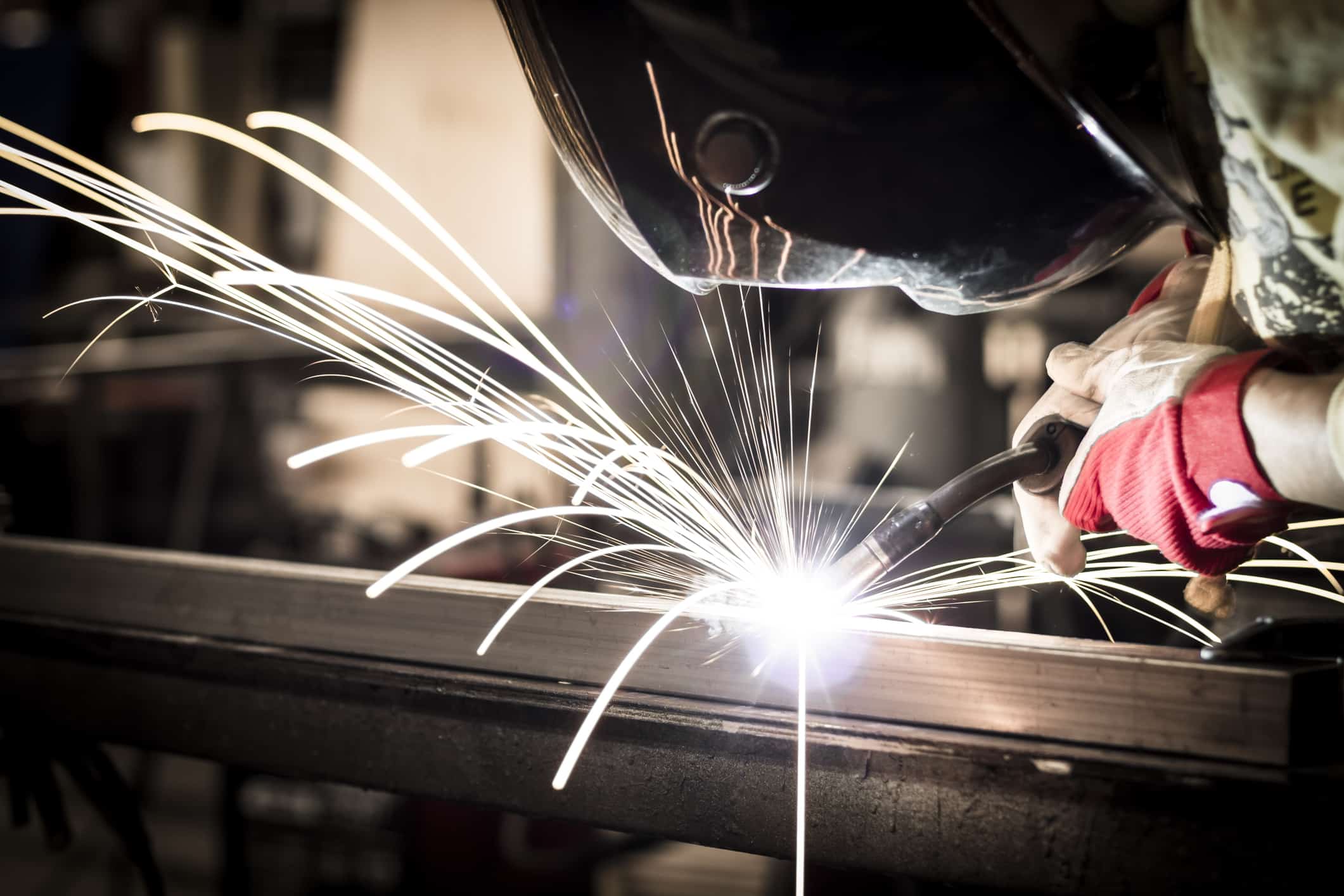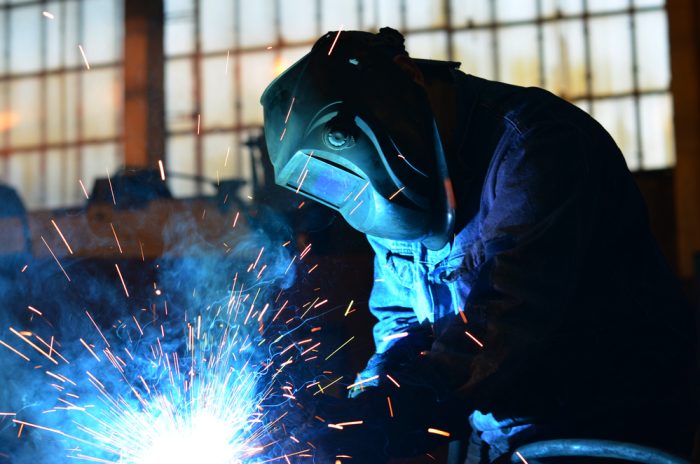How to prevent distortion in Montana Mobile Welding and Repair Welding projects
Wiki Article
Typical Welding Repair Issues and Just How to Address Them Successfully
Welding repair services frequently experience a series of problems that can endanger the stability of the end product. Typical problems consist of poor penetration, porosity, and imbalance, to name a few. Each defect provides special difficulties that require details methods for resolution. Recognizing these issues is crucial for welders aiming to enhance their results and skills. This discussion will discover these typical welding repair issues and efficient approaches to address them.Poor Penetration
Inadequate infiltration occurs when the weld steel stops working to completely fuse with the base material, resulting in weak joints and possible architectural failures. This concern often comes from insufficient heat input, wrong electrode angle, or inappropriate welding speed. Welders might experience inadequate penetration because of a mistake of the necessary specifications for a details material thickness or kind. Additionally, contamination on the base product's surface can impede efficient bonding, worsening the trouble. To address inadequate penetration, welders ought to assure suitable setups on their devices and keep a tidy job surface. Regular assessment of welds is suggested to determine any kind of shortages early, permitting timely modifications and the prevention of endangered structural stability in welded assemblies.Porosity
Porosity is an usual defect in welded joints that materializes as little gas bubbles trapped within the weld metal. This problem can endanger the stability of the weld, bring about lowered toughness and potential failure under anxiety. Montana Mobile Welding and Repair Fabrication. Porosity typically occurs from contamination, dampness, or improper welding strategies, which enable gases to leave right into the liquified weld swimming pool. To address porosity, welders need to assure proper surface area preparation, preserve a clean workplace, and use suitable welding specifications. Additionally, picking the appropriate filler product and securing gas can minimize gas entrapment. Normal inspection and testing of welds can assist identify porosity early, assuring timely restorative actions are taken, therefore protecting the high quality and reliability of the bonded frameworkMisalignment
Misalignment in welding can emerge from numerous elements, including incorrect configuration and thermal expansion. Comprehending the source is crucial for effective resolution. Numerous improvement strategies are available to realign components and ensure architectural integrity.Reasons for Misalignment
Welding misalignment commonly originates from a variety of underlying problems that can endanger architectural stability. One key cause is incorrect fit-up of parts prior to welding, which can result in gaps and irregular surfaces. Variations in thermal expansion during the welding process can likewise lead to distortion, particularly if the materials being signed up with have various coefficients of growth. Additionally, insufficient securing and fixturing might fail to hold parts securely in location, bring about movement during welding. Poorly conserved devices, including welding makers and tools, may present disparities in the weld grain, more adding to imbalance. Finally, operator mistake, coming from not enough training or experience, can additionally play a significant function in producing misaligned welds.Modification Techniques Readily Available
Addressing misalignment successfully needs a mix of corrective techniques customized to the certain concerns handy. One common technique is making use of fixtures or jigs to hold parts in the correct placement during welding, making certain consistent alignment. In addition, preheating the products can help in reducing distortion and boost fit-up. For substantial imbalance, mechanical realignment techniques, such as utilizing hydraulic jacks or clamps, can be used to remedy the setting before welding. Post-weld heat treatment may likewise be essential to soothe anxieties brought on by imbalance. Ultimately, careful examination and change throughout the setup phase can stop imbalance problems from coming to be significant troubles, promoting a smoother welding procedure and boosting total architectural integrity.Distortion
Distortion is a typical obstacle in welding that can arise from various aspects, including uneven cooling and heating. Recognizing the reasons for distortion is vital for applying reliable avoidance strategies. Addressing this concern not just enhances architectural integrity but also improves the total quality of the weld.Sources of Distortion
When subjected to the intense heat of welding, products frequently go through adjustments that can cause distortion. This sensation largely occurs from thermal growth and tightening during the welding process. As the weld location warms up, the material expands; upon air conditioning, it acquires, which can create interior tensions. On top of that, uneven heating throughout a work surface can worsen these anxieties, causing warping or bending. The kind of product additionally plays a substantial role; steels with varying thermal conductivity and coefficients of development might react differently, bring about uncertain distortions. In addition, bad joint layout and poor fixturing can contribute to imbalance throughout welding, increasing the probability of distortion. Recognizing these causes is crucial for effective welding fixing and prevention strategies.Avoidance Techniques
Effective prevention techniques for distortion throughout welding focus on regulating heat input and making sure correct joint design. Maintaining a constant heat input assists to decrease thermal growth and contraction, which can cause distortion. Using techniques such as preheating the work surface can likewise lower the temperature slope, promoting consistent home heating. Furthermore, selecting proper joint styles, such as T-joints or lap joints, can enhance security and reduce tension focus. Implementing appropriate fixturing to protect the workpieces in position further aids in maintaining alignment during the welding process. Staggered welding sequences can disperse warmth extra equally, preventing localized distortion. By applying these approaches, welders can substantially lower the probability of distortion and improve the overall high quality of their welds.Fracturing
Fracturing is an usual issue run into in welding fixings, often resulting from numerous factors such as incorrect air conditioning prices, product choice, or insufficient joint prep work. The occurrence of splits can greatly endanger the integrity of the weld, resulting in prospective failings throughout operation. To resolve this issue, welders need to initially examine the source, making certain that materials are suitable and properly picked for the details application. Furthermore, managing the cooling price during the welding procedure is necessary; fast cooling can cause anxiety and lead to breaking. Correct joint layout and preparation also add to reducing the danger. Carrying out these techniques can boost mig stick welder weld high quality and durability, ultimately lowering the probability of cracking in completed weldments.
Incomplete Combination
A substantial problem in welding fixings is insufficient combination, which takes place when the weld metal does not properly bond with the base product or previous weld passes - Montana Mobile Welding and Repair Belgrade Welding. This issue can cause weak points in the joint, possibly endangering the honesty of the bonded structure. Variables adding to incomplete combination include insufficient heat input, improper welding technique, and contamination of the surfaces being signed up with. To resolve this issue efficiently, welders should ensure proper pre-weld cleaning and surface prep work, along with readjust their welding specifications to accomplish sufficient infiltration and blend. Normal examination throughout the welding process can also help determine incomplete combination early, permitting prompt restorative actions to boost the general quality of the weldOverheating
While welding repair work can improve architectural integrity, overheating offers a substantial difficulty that can cause material degradation. Excessive warmth throughout welding can change the mechanical buildings of steels, causing minimized strength, boosted brittleness, and warping. This sensation is especially important in high-stress applications where architectural dependability is paramount. Recognizing getting too hot can entail aesthetic examinations for discoloration or distortion, in addition to keeping track of temperature throughout the welding procedure. To minimize the threats connected with getting too hot, welders ought to use ideal methods, such as controlling warm input, readjusting traveling speed, and utilizing ideal filler products. Additionally, applying pre- and post-weld warmth treatments can help bring back material residential properties and boost the total high quality of the repair work, making sure long-term efficiency and safety.Often Asked Concerns
What Are the Usual Indicators of a Welding Issue?

How Can I Examine My Welds for High quality?
welding at home To examine welds for quality, one cigweld 135 can use visual examinations, ultrasonic testing, and radiographic techniques. Each technique guarantees architectural integrity, identifies issues, and confirms adherence to specified standards, inevitably enhancing the reliability of the bonded joints.What Safety and security Safety Measures Should I Take While Welding?
When welding, one must focus on safety and security by putting on appropriate individual protective tools, making certain appropriate air flow, safeguarding flammable materials away, maintaining a tidy work area, and understanding surroundings to avoid crashes and injuries.Can I Repair a Weld Without Remodeling the Entire Joint?
Repairing a weld without redesigning the entire joint is possible, relying on the damages (Belgrade Fabrication). Techniques such as grinding, including filler product, or utilizing a welding process can efficiently deal with particular defects while preserving the bordering frameworkWhat Equipment Are Essential for Efficient Welding Repair Works?
Vital devices for effective welding repair work include a welding machine, cord brush, grinder, safety gear, clamps, and filler products. Each tool plays a crucial function in making sure top quality and safety and security throughout the repair work procedure. Porosity normally occurs from contamination, dampness, or incorrect welding techniques, which enable gases to get away into the molten weld pool. Inadequately kept tools, consisting of welding devices and devices, may introduce inconsistencies in the weld grain, more contributing to misalignment. When subjected to the intense warmth of welding, materials usually go through modifications that can lead to distortion. Splitting is a typical concern encountered in welding repair work, often resulting from different factors such as incorrect cooling rates, product selection, or poor joint prep work. A significant issue in welding repair work is incomplete fusion, which occurs when the weld metal does not adequately bond with the base product or previous weld passes.Report this wiki page